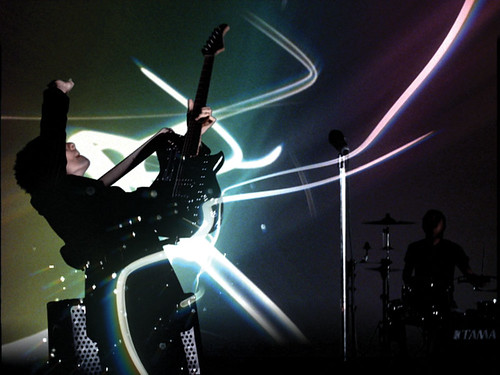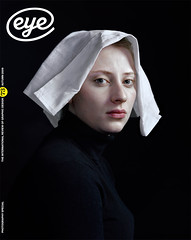Autumn 2009
Art and art direction – Jens Gehlhaar
Jens Gehlhaar, of directors’ collective Brand New School, moves effortlessly between moving image campaigns, still photography and CGI.

Jens Gehlhaar and his partners’ creative work for print and broadcast exhibits intelligent concepts, complex narratives, beautiful imagery and a wry sense of humour. You might imagine that Brand New School (BNS), his ‘directing collective’, would make little use of traditional still photography. But according Gehlhaar, a German-born CalArts graduate (see Eye no. 31 vol. 8), photography is a vital component not only in their work but in their working process. This can be: found photography for storyboarding; stop motion; computer graphics made to look ‘real’ using photographic texture maps; camera techniques that make animation look photographic; or ‘frankensteining’, which combines different photographic sources to create one seamless image.
‘Commercials go through extensive post-production,’ says Gehlhaar. ‘Colours are graded by highly paid specialists, a star’s scar is removed in a music video, or the sky gets replaced because of an overcast day – though a lot of commercials are seen “as photographed”, too.’
BNS work with both commercial and feature film directors of photography but they also shoot images in-house. One practical use of still photography is the ‘light probe’, used as an aid when incorporating convincing computer generated imagery (CGI) into live action. The cinematographer’s practical light set-up is shot as a spherical ‘high dynamic range’ photograph and then copied into the virtual set-up, creating an ‘environment and lighting map’ for accurate reflections and light sources.
US music video for the single ‘Hysteria’ from the album Absolution by Muse. The band plays inside a giant ‘head’, bombarded by imagery. The musicians were shot against a green screen, and BNS animated and composited the imagery with the footage. The video builds from flat graphics projected behind the musicians to CGI shapes floating through space. Directed, designed and animated by BNS, 2004. Cinematographer: Adam Marsden. Client: Warner Bros. Records.
One frequent application of photography is as a flat element in what Gehlhaar calls a ‘hybrid animation’ – a project with equal parts of live action and computer-generated images. The foreground (e.g. actors) is filmed on blue screen, and the background inserted by the computer. Or the background is a filmed plate, and the foreground is composited into the scene. Motor-drive photography – to approximate film – and the laborious technique of stop-motion are common, too.
BNS typically do print work in conjunction with their television projects. Most of Gehlhaar’s studio colleagues are trained graphic designers with backgrounds in print and typography – their design sensibilities inform motion work, such as their fake covers for Zune Pass, while designs for print display cinematographic qualities.
They work with photographers who have experience working with different motion graphics studios and ‘know their way around a film set’ says Gehlhaar. In addition to their local knowledge of design practice, expertise with shooting for fashion, music and editorial in contexts that involve studio as well as location sites is also necessary.
When it comes to working with cinematographers, Gehlhaar adds, the choice gets complicated: ‘The logistics are more complex, and the technical requirements more varied.’ To attract the interest of the best people, ‘you need great creative, a decent budget and multiple shooting days.’
Producing imagery for commercial film is a complicated affair. ‘The quest is for the smartest, most efficient and creative solution,’ says Gehlhaar. ‘If that means shooting actors on green screen in LA and putting a Paris skyline behind them, that’s what we’ll do!’
Deborah Littlejohn writer, researcher and PhD candidate, College of Design, N.C. State University, Raleigh, NC
First published in Eye no. 73 vol. 19 2009
Eye is the world’s most beautiful and collectable graphic design journal, published quarterly for professional designers, students and anyone interested in critical, informed writing about graphic design and visual culture. It is available from all good design bookshops and online at the Eye shop, where you can buy subscriptions, back issues and single copies of the latest issue.


